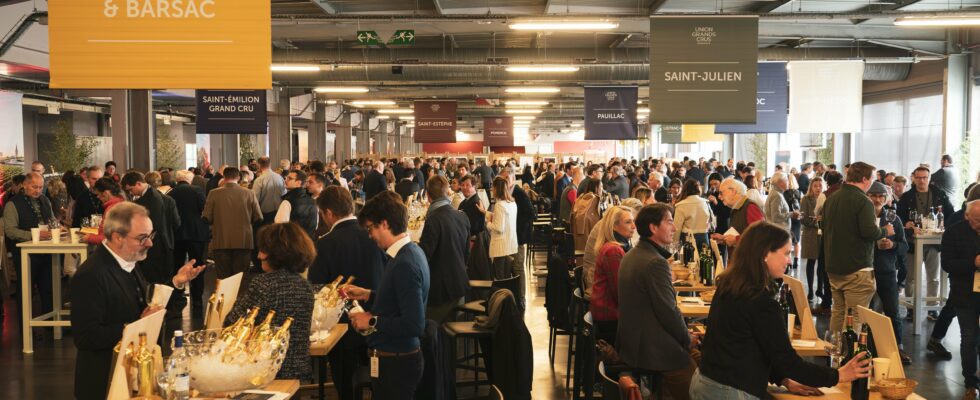Despite the tremendous momentum organic farming, the wine industry is suffering. Six million hectoliters were distilled last year and around a hundred thousand hectares will be uprooted, or nearly 15% of the total surface area. The fault of the disenchantment which strikes the blood of the vine in France: less 70% in sixty years – the reds are struggling more than the others. To ward off the inexorable trend, initiatives are multiplying. Like, to regain the favor of female palates and millennials, reduce alcohol levels, break the codes of consumption. Focus on the 2023 Bordeaux vintage. Our guide.
Like every year for forty-three years, the Gironde vineyards vibrated at the end of April to the rhythm of Primeur Week. During this fashion week organized mainly by the Union des grands crus de Bordeaux (UGCB), several thousand samples from the 2023 vintage slipped into their most beautiful aromatic attire to parade in front of some 5,000 visitors. All these professionals – sommeliers, importers, wine merchants, critics, journalists, etc. – were able to verify the well-known myth that, in viticulture, the years follow one another but are not the same. After the exceptional 2022, powerful and rich, the fruit of the last harvest must have asserted itself. A real challenge, rather well met by this vintage which marks the return to a certain classicism: “A more oceanic profile, reflecting the Bordeaux tradition with a lot of modernity”, summarizes Ronan Laborde, president of the UGCB.
A good keeping capacity
The success of its fresh and subtle juices is highlighted by the finesse of the tannins, the purity of the aromas, a sparkling fruitiness, a beautiful acidity, a guarantee of good conservation, and a moderate alcohol level. So many qualities, faithful to the identity of the great Bordeaux wines, which will make them accessible in their youth, while being endowed with good aging potential. However, its merits should be assessed on a case-by-case basis, as the production of red on both banks of the Garonne turns out to be heterogeneous. The differences arise mainly from the understanding, choices and reactivity of the teams in place, in the vineyard and in the cellar: a true winemaker’s vintage. In Libourne, where the majority of Merlots have suffered from attacks of mildew, we can verify how large terroirs, better ventilated and better drained, always prove less susceptible to cryptogamic diseases. On the left bank, on the other hand, Cabernet-Sauvignon, a later grape variety, dominates. The Indian summer allowed it to produce superb wines that are distinguished, structured, deep and fresh. The northernmost appellations (Saint-Julien, Pauillac, Saint-Estèphe) are more harmonious in their successes.
Also more homogeneous, the lively and pure dry whites are seductively fresh and radiant. Their remarkable flavor and the beautiful aromatic compositions that they deliver undoubtedly make them the best of the last ten years. Likewise, sweet wines captivate with their perfect balance of sweetness and freshness.
Significant price drops
The fact remains that when the wine is tasted, it must be sold. Last year, despite the magnificence of 2022, the Bordeaux trade – which ensures marketing to the public in France and around the world – had shunned the price increases, sometimes astronomical, imposed by the properties. This time, the Bordeaux market was waiting for a strong signal on marketing. Understood, since from the start of the campaign, iconic classified grands crus announced significant declines, such as Lafite Rothschild (- 32%), Cos d’Estournel (- 38%), Haut-Brion (- 39%), Léoville Las Cases (-40%)… On average, the adjustment is around -20%, but “hit hard by the prevailing economic slump, the countryside is nevertheless stagnating”, confides a local trader. And it’s not political uncertainties that will help it take off…
